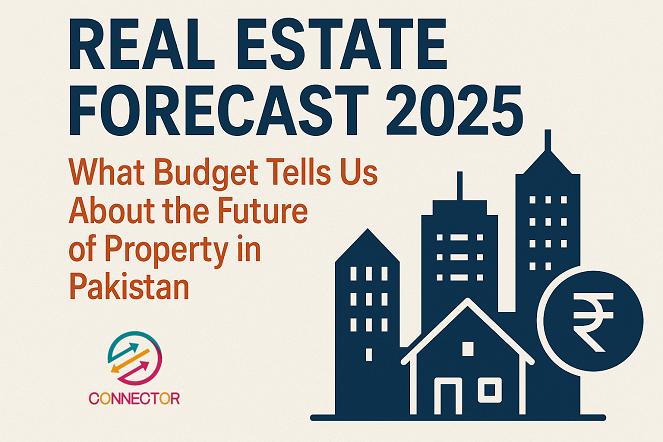As the Pakistan Budget 2025 unfolds, real estate professionals, investors, and homebuyers are paying close attention. With a shifting economic landscape and a government push for growth through construction and housing, what does this year’s budget signal about the future of property in Pakistan?
In this post, we break down key policy changes and what they mean for real estate trends in 2025.
💡 Key Budget Highlights Affecting Real Estate
Here are the most notable changes in Budget 2025 impacting property:
- Reduction in Capital Gains Tax (CGT) on long-term property holdings.
- Lowered withholding tax on property transactions under specific slabs.
- Tax exemptions for builders and developers on affordable housing projects.
- New incentives for vertical (high-rise) construction to manage urban sprawl.
- Increased allocation for infrastructure development, especially in urban centers.
📈 Real Estate Market Predictions for 2025
✅ 1. Boost in Affordable and Mid-Income Housing
With tax incentives and reduced documentation barriers, developers are likely to launch more mid-income housing projects. This supports first-time homebuyers, especially those looking for installment-based options in cities like Islamabad, Lahore, and Karachi.
Example:
Projects like Valencia Heights B-17 Islamabad are gaining attention due to their affordability, location near M1 Motorway and GT Road, and modern lifestyle features like a gym, mosque, and uninterrupted electricity. Such high-rise projects are expected to benefit from government support in 2025.
✅ 2. High-Rise Living Will Become More Common
To combat land scarcity and urban congestion, the government is offering incentives for vertical construction. Expect a sharp rise in apartment-style living, especially in gated communities and major city centers.
🔁 3. Real Estate Investment Trusts (REITs) May Gain Momentum
With investor confidence rebuilding and tax relaxations in place, REITs could become more popular. Budget 2025 encourages regulated investment frameworks, allowing middle-income investors to enter the market without directly buying property.
⚠️ 4. Construction Costs Will Remain a Challenge
Despite the government’s positive tone, rising prices of cement, steel, and labor continue to impact project feasibility. Inflation pressure may still affect profit margins for developers in the short term.
🏢 5. Tier-2 Cities Could Become New Investment Hotspots
With metro cities becoming saturated and costly, developers and investors may shift focus to Faisalabad, Multan, Bahawalpur, and Peshawar. Budget 2025 includes funding for infrastructure in secondary cities, making them attractive for future growth.
📊 Quick Forecast Summary
| Trend | Forecast for 2025 |
|---|---|
| Housing Demand | High for mid-range and apartment units |
| Property Prices | Moderate growth in urban centers; stable in Tier-2 cities |
| Investor Confidence | Gradually increasing, especially for long-term investments |
| Construction Activity | Higher in high-rise & budget housing segments |
| Policy Environment | Supportive, especially for formal and documented investments |
📝 Final Thoughts: Is 2025 the Year to Buy or Invest?
If you’re a homebuyer, 2025 is shaping up to be a favorable year, especially if you’re considering projects backed by government-friendly policies like Valencia Heights B-17 Islamabad.
For investors, long-term gains still look promising—especially in high-rise developments and upcoming Tier-2 cities. However, caution is needed due to construction material inflation and regulatory tightening.
Conclusion:
The Pakistan real estate market in 2025 is heading toward more structured, transparent, and sustainable growth. With smart planning and awareness of budget policies, both buyers and investors can benefit from the opportunities this year presents.

